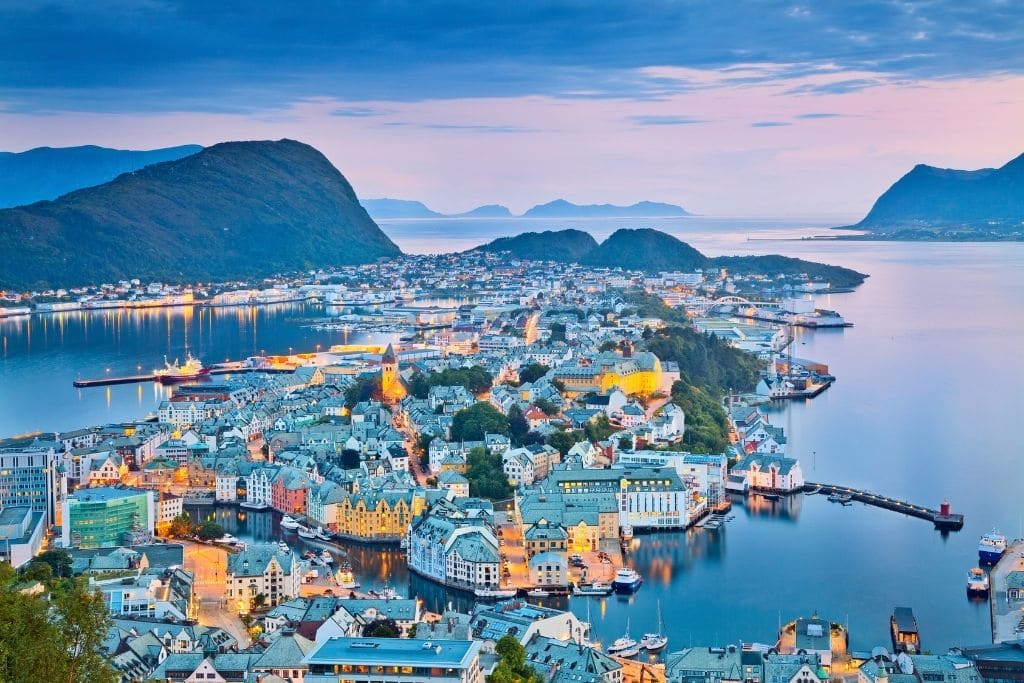No one on the planet is left untouched by the effects of climate change, from rising temperatures and sea levels to worsened air pollution and droughts that threaten water and food security. But as many experts have found, climate change disproportionately impacts marginalised and minority communities, many of whom are forced to flee their homes in a growing phenomenon known as climate migration. While it is critical that the world works together to drastically and rapidly cut down greenhouse gas emissions and invest in climate mitigation and adaptation, it’s understandable for individuals – at least those with the resources and the means – to consider relocating to the best places to live to avoid climate change.
—
So where are the best places to live that are least affected by the changing climate? This question turns out to be quite difficult to answer. Does it mean countries that possess the geographical advantages of not being severely affected by climate change in the future? Does it refer to countries that put in the most effort to mitigate the effects of climate change? Or does it mean countries that are most likely to adapt to climate change? We explore the top-performing countries in each of the three categories: geographical advantages, mitigation, and adaptation.
Best Places to Live to Avoid Climate Change
On Geographical Advantages
A paper published by the Anglia Ruskin University in the United Kingdom has identified five countries in geographical locations with “favourable starting conditions” that may allow them to be less touched by the effects of climate change: New Zealand, Iceland, the United Kingdom, Australia, and Ireland. The results are based on the analysis of the countries’ carrying capacity – refers to a species’ average population size in a particular habitat, isolation, and self-sufficiency.
In terms of carrying capacity, all these countries with the exception of the UK, have a small population, a high fraction of agricultural land, and direct access to seas. This indicates that they are rich in terms of food resources.
When it comes to isolation, these five nations are mostly detached from heavily populated landmasses. According to the study, the reason that isolated communities are likely to be “lifeboats” is based on the presumption that globalisation will be reversed when the temperature rises, causing economic depression and social unrest. Therefore, in this worst-case scenario, isolated countries tend to be less affected by the economic and social instability of neighbouring countries.
Lastly, in terms of self-sufficiency, these countries mostly have abundant renewable energy and non-renewable energy sources, showing their high potential of being energy-wise independent.
On Climate Mitigation
According to the Climate Change Performance Index (CCPI), published by the independent monitoring agency, the top three countries leading in climate protection are all Scandinavian: Denmark, Sweden, and Norway, while the United Kingdom is ranked fourth in climate protection. This index is determined by countries’ efforts on lowering greenhouse gas emissions, on adopting renewable energy, on using energy in an efficient and responsible manner, and on introducing climate-friendly policies.
Interestingly, the previous four countries mentioned with the greatest geographical advantage are not ranked particularly high when it comes to climate mitigation policies and action. In fact, Australia is rated as highly insufficient by the Climate Action Tracker, and is one of the world’s worst performers as its climate policies are not compatible with the Paris Agreement – the planet will reach a global warming of 4°C if all countries follow the Agreement’s level of ambition, which will lead to a climate catastrophe.
In the worst case scenario, a single country’s mitigation measures will also hardly make a difference during a climate apocalypse, which is why we need strong global mitigation efforts now to ensure a positive impact.
On Climate Adaptation
There is a presumption that the level of a country’s vulnerability facing climate change directly correlates to its exposure to the physical factors of climate change, leading to the conclusion that the most vulnerable countries are exposed to most physical threats. Although this is accurate in most cases, there are still many countries that experience physical threats but are less vulnerable to climate change.
According to the Climate Change Performance Index, Japan is the fourth most affected country by climate change, given the frequency and severity of natural disasters such as earthquakes and tsunamis. Yet, the ND-GAIN Index from the Notre Dame Global Adaptation Initiative, which summarises a country’s vulnerability to climate change and its readiness to improve resilience, ranks Japan as 17th best among all the countries in the world. In other words, while the island country will likely face worsen effects from climate change, they have proven to be better and more willing to adapt to recover.
All five Scandinavian countries – Denmark, Finland, Iceland, Norway, and Sweden – are also listed in the top 10 of the ND-GAIN Index. Although they are not the most climate-affected countries, the report places them in the middle of the global rankings in terms of physical exposure as the temperatures in the Arctic Circle are rising twice as fast as the rest of the world, leading to rising sea levels.
Nevertheless, this fact optimistically shows that we have the potential to adapt to climate change, instead of abandoning our land when we exceed the limit of 1.5°C and leaving to “lifeboats”. We need global investment into the most vulnerable countries, which are primarily located in Africa, the Middle East, and South America, allowing them to be self-sufficient in developing infrastructures and technologies to adapt to climate change. This includes the climate debt that wealthy nations (and historical carbon emitters) have promised to direct US$100 billion a year towards adaptation and resilience in the developing world starting in 2022.
You might also like: Climate Refugees: When Home Becomes Uninhabitable
The Main Takeaway
There is no easy answer on the best places to live to avoid climate change, as it highly depends on your subjectivity to the possible extent of the effects of climate change. If you are optimistic about our current climate action and trajectory in stemming climate change through mitigation and adaptation, Scandinavian countries are the best options. On the contrary, for those desperately pessimistic, isolated and self-sufficient countries are likely the better choice. Ultimately, not everyone has the resources and means to relocate, nor should people be forced to leave their homelands to avoid the consequences of humanity’s dependence on fossil fuels and environmental degradation.
What is possible is that the world can collectively reduce greenhouse gas emissions and keep global temperatures rise to under 1.5C; we have all the tools and policy instruments to mitigate and adapt to climate change, and to ensure lands can still be cultivated, crops can still grow, and water supply is still sufficient.
This story is funded by readers like you
Our non-profit newsroom provides climate coverage free of charge and advertising. Your one-off or monthly donations play a crucial role in supporting our operations, expanding our reach, and maintaining our editorial independence.
About EO | Mission Statement | Impact & Reach | Write for us


















